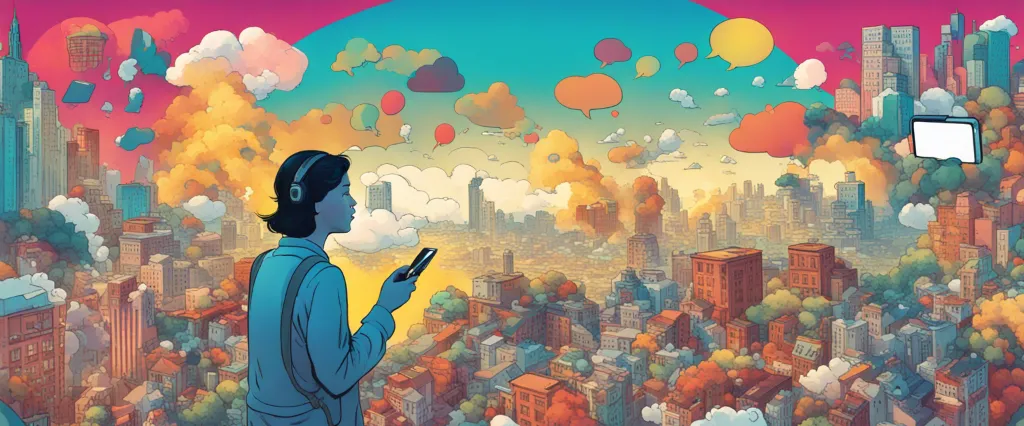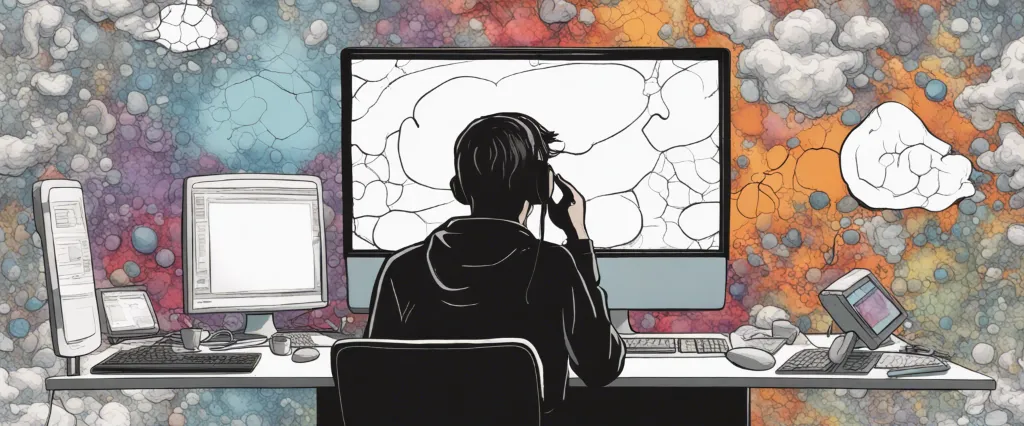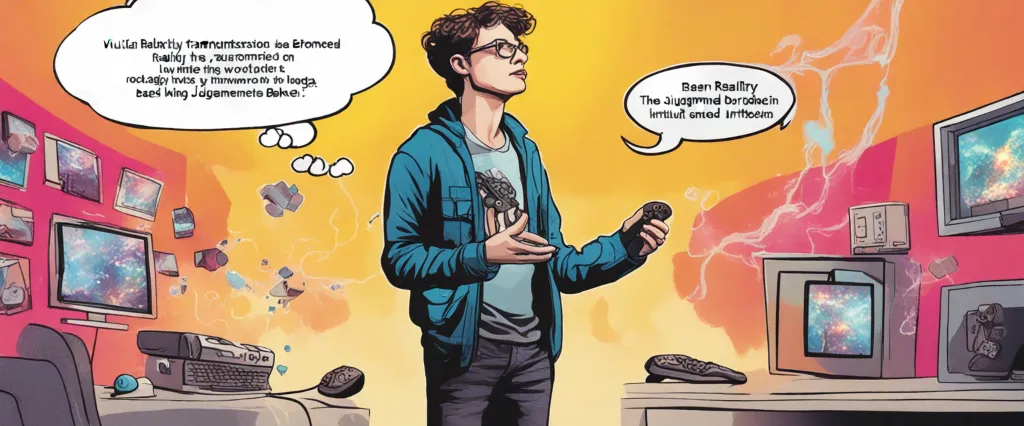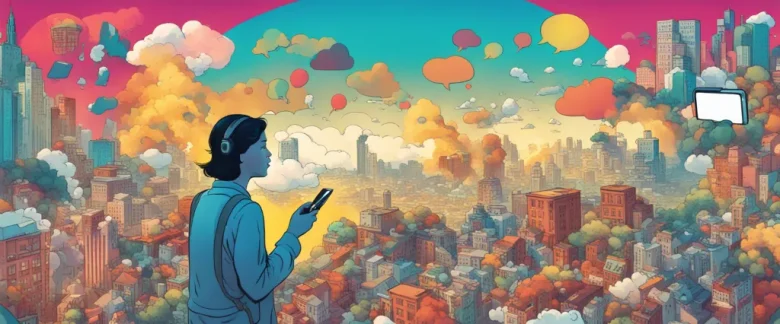
In the exploration of our digitally connected world, Jane McGonigal‘s groundbreaking book, Reality is Broken, takes readers on a captivating journey through the power of games to positively impact our lives. As a renowned game designer and researcher, McGonigal sheds light on the potential of harnessing game mechanics to solve real-world problems and foster happiness. With an assorted background in academia, game development, and the TED stage, McGonigal offers a unique perspective on the transformative role games can play in addressing global challenges and enhancing our well-being.
Chapter 1: The Power of Games to Motivate and Engage
In Chapter 1 of “Reality is Broken” by Jane McGonigal, titled “The Power of Games to Motivate and Engage,” the author explores the potential of games to inspire and captivate individuals. McGonigal argues that traditional games offer a level of engagement that real-world activities often lack, making them a powerful and effective tool for motivation.
One of the key aspects of games is their ability to provide players with a “superpowers” experience, allowing them to tackle difficult challenges and overcome them successfully. These challenges provide a sense of purpose and meaning, something that many people may find lacking in their everyday lives. Games inherently have clear goals and rules, which give players a sense of structure and direction, enabling them to navigate through obstacles and experience a sense of achievement.
Additionally, games have the power to provide immediate feedback, which helps players improve their skills and motivates them to continue playing. This aspect of games creates a positive feedback loop, as players are constantly driven to improve and reach higher levels of proficiency.
Furthermore, games have the potential to create strong social connections and foster collaboration. Online or multiplayer games, in particular, allow players to form communities, work together to achieve common goals, and build lasting relationships. McGonigal suggests that these social aspects of gaming can be harnessed and utilized to solve real-world problems and promote collective action.
McGonigal concludes the chapter by emphasizing the need to tap into the motivational power of games and channel it towards real-world challenges. By recognizing and utilizing the unique qualities of games to engage and motivate individuals, she believes that games can play a crucial role in improving our lives and making the world a better place.
Chapter 2: Escaping into Alternate Realities
Chapter 2 of “Reality is Broken” by Jane McGonigal, titled “Escaping into Alternate Realities,” explores the reasons why individuals seek refuge in video games and virtual worlds. McGonigal argues that people are drawn to alternate realities because they offer a sense of purpose, autonomy, and social connection that is often lacking in the physical world.
The chapter begins by highlighting the concept of “psychosocial resilience,” which refers to an individual’s ability to cope with challenges and setbacks. McGonigal suggests that video games provide a unique environment where players can build their resilience by facing and overcoming virtual obstacles. She believes that this ability to persevere and succeed in a game setting can have a positive spill-over effect into real-world challenges.
Furthermore, the chapter explores the appeal of autonomy in gaming. In virtual worlds, players have control over their actions, decisions, and outcomes. McGonigal argues that this sense of agency is crucial for individuals, as many aspects of the real world limit their ability to make choices or control their circumstances. By contrast, games grant players the power to shape their own destinies, which can lead to feelings of empowerment and fulfillment.
Lastly, McGonigal delves into the social aspects of gaming. She emphasizes the importance of collaboration and teamwork in many games, which often foster strong social bonds and a sense of belonging. Virtual communities and online multiplayer games provide individuals with a supportive network of like-minded individuals, where they can connect, communicate, and cooperate towards common goals.
In summary, Chapter 2 of “Reality is Broken” highlights the reasons why people are drawn to alternate realities through gaming. These include the ability to build resilience, experience autonomy, and find social connection. By exploring these aspects, McGonigal aims to demonstrate the potential benefits of games in enhancing various aspects of our lives.
Chapter 3: The Psychology of Gaming
Chapter 3 of “Reality is Broken” by Jane McGonigal, titled “The Psychology of Gaming,” delves into the various psychological aspects and benefits of video games. McGonigal argues that games have unique properties that draw players in and keep them engaged, which can be harnessed to address real-world problems.
The chapter begins with the concept of “flow,” a state of complete immersion and focus that gamers often experience during gameplay. McGonigal explains that flow is essential for happiness and productivity, and games provide a structured environment that easily facilitates this optimal mental state. Furthermore, games provide clear goals, immediate feedback, and a balanced level of challenge that keeps players motivated and engaged.
She then explores the psychological concept of “grit” and how games can help build this trait. Grit refers to the ability to persevere and maintain long-term commitment towards a goal. McGonigal argues that games offer players a sense of achievement and progress, providing a safe space to practice perseverance and resilience that can be applied in real-life situations.
Another important psychological benefit discussed is the power of positive emotions. Research suggests that positive emotions facilitate creativity, cooperation, and problem-solving. Games excel at creating positive emotions by offering players a sense of agency, satisfying social interactions, and constant opportunities for fun and surprise.
The chapter also touches on the concepts of empathy and social connection, highlighting how multiplayer games create a platform for collaboration, teamwork, and even meaningful relationships. McGonigal emphasizes that these social interactions can have a positive impact on players’ well-being and their ability to collaborate in the real world.
Overall, Chapter 3 provides a comprehensive overview of the psychological aspects that make games appealing and how these attributes can be leveraged to create positive change. McGonigal emphasizes that by understanding and harnessing the psychology of gaming, we can tap into the potential of games to solve real-world problems and improve individual and collective well-being.
Chapter 4: Gaming for Positive Change

Chapter 4 of “Reality is Broken” by Jane McGonigal is titled “Gaming for Positive Change.” This chapter focuses on the potential of games to create positive impacts on individuals and society.
McGonigal begins by highlighting how games can provide individuals with a sense of purpose, autonomy, and mastery. She discusses examples of games designed for real-world problem-solving, such as Foldit, which involves solving complex protein-folding puzzles to help advance medical science. Through this example, she illustrates how games can tap into players’ collective intelligence and engage them in meaningful challenges that contribute to real-life advancements.
The author also explores games designed to stimulate physical activity and improve health. She mentions games like Dance Dance Revolution and Wii Fit, which encourage players to be active and can have tangible health benefits. Furthermore, McGonigal emphasizes that games with positive impacts often tap into gamers’ intrinsic motivations, providing them with a sense of enjoyment and accomplishment.
Another essential aspect of this chapter is the exploration of games designed for social connectivity and collaboration. McGonigal highlights the power of online multiplayer games like World of Warcraft, where players unite to achieve shared goals. She emphasizes how these experiences foster social bonds and promote cooperation and teamwork skills that can be applied beyond the game.
Finally, the author addresses the concept of “gamification,” which involves integrating game elements into non-game contexts, such as education, work, and personal goals. McGonigal argues that by applying game design principles, these contexts can become more engaging and motivating, resulting in improved learning outcomes and productivity.
In summary, McGonigal’s Chapter 4 presents various examples and insights into the potential of games for positive change. It explores how games can promote problem-solving, physical activity, social connectivity, and engagement in various aspects of life. By harnessing the inherent motivations of gamers, games can be transformative tools for personal growth and societal improvement.
Chapter 5: The Science of Flow and Optimal Experience
Chapter 5 of “Reality is Broken” by Jane McGonigal explores the concept of flow and optimal experience in relation to gaming and its impact on individuals. McGonigal begins by explaining that flow is a state of total immersion and focus in an activity, characterized by intense concentration, effortless action, and a sense of control. She argues that video games are uniquely designed to facilitate flow experiences, as they have clear goals, immediate feedback, and offer a balance between challenge and skill.
One key aspect of flow is the merging of action and awareness, where individuals become so engrossed in the game that they lose track of time and self-consciousness. McGonigal highlights how this absorption in gaming can lead to positive emotions, such as joy and delight, as well as increased motivation and a sense of fulfillment. She also notes that flow experiences in games can have a transformative effect on individuals, helping them to develop new skills, build confidence, and improve their overall well-being.
Furthermore, the chapter discusses the concept of optimal experience, which is the broader application of flow in various aspects of life. McGonigal suggests that by understanding the elements that lead to flow in games, individuals can strive to create similar experiences in their real lives. She emphasizes the importance of setting clear goals, having immediate feedback, and finding the right balance between challenge and skill in daily activities, as this can enhance overall happiness and productivity.
In conclusion, Chapter 5 of “Reality is Broken” dives into the science of flow and optimal experience, demonstrating how video games provide a unique platform for individuals to experience states of total immersion, concentration, and fulfillment. By incorporating the principles of flow into other areas of life, McGonigal argues that individuals can harness the power of gaming to improve their overall well-being and create more engaging and meaningful experiences.
Chapter 6: The Social Benefits of Gaming
Chapter 6 of the book “Reality is Broken” by Jane McGonigal discusses the social benefits of gaming. McGonigal argues that gaming can have a positive impact on individuals and communities, citing several examples and studies to support her claims.
One key point McGonigal makes is that gaming creates social connections and strengthens relationships. Through cooperative gameplay and online communities, gamers can collaborate, strategize, and problem-solve together. These shared experiences help foster a sense of belonging and camaraderie among players, cultivating friendships and even forming support networks.
Furthermore, gaming provides a platform for people to engage in meaningful social interactions. McGonigal highlights games that encourage players to engage in acts of kindness, support charitable causes, and facilitate altruistic behavior. For instance, games like “Foldit” and “Evoke” have utilized human intelligence to solve complex scientific and social problems.
Another aspect of social benefit explored in the chapter is the empowerment and motivation that gaming can foster. McGonigal argues that gaming provides individuals with a sense of agency and control, allowing them to take on challenges and overcome obstacles. By experiencing the satisfaction of progress and achievement within a game, players are motivated to transfer those skills and attitudes to real-life situations.
McGonigal also emphasizes the potential for using gaming as a tool for positive social change. She argues that by harnessing the collective intelligence and problem-solving abilities of gamers, we can address challenges such as poverty, climate change, and education. One example she highlights is the game “World Without Oil,” which engaged players in imagining and solving the social and economic consequences of an oil crisis.
In conclusion, Chapter 6 of “Reality is Broken” presents a compelling argument for the social benefits of gaming. By creating connections, fostering social interactions, empowering individuals, and enabling collective problem-solving, gaming has the potential to enhance not only the lives of individuals but also the well-being of communities.
Chapter 7: From Virtual to Real-World Impact
Chapter 7 of “Reality is Broken” by Jane McGonigal, titled “From Virtual to Real-World Impact,” explores the ways in which the principles and mechanics of games can be applied to real-world problems, ultimately leading to positive social change. McGonigal argues that understanding the motivating factors and mechanisms that make games engaging can help solve some of the most pressing challenges facing society.
The chapter begins by discussing the concept of “gameful design” and its potential to create more meaningful and engaging experiences outside the realm of games. McGonigal demonstrates various examples of how gamification has been successfully applied to real-world problems, such as using game mechanics to encourage physical activity, promote environmental sustainability, and enable collective problem-solving.
One of the key ideas presented is the concept of “urgamification,” which involves harnessing the motivational power of games to tackle urgent global issues. McGonigal highlights examples of initiatives that have successfully used gamification to address problems like hunger, poverty, and climate change. By incorporating elements of collaboration, competition, and rewards, these initiatives have shown remarkable success in mobilizing and engaging people to work towards a common goal.
Additionally, the chapter emphasizes the potential of alternate reality games (ARGs) in transforming the real world. ARGs are immersive experiences that blur the lines between the virtual and physical realms, often involving collective problem-solving and real-world challenges. McGonigal presents inspiring cases of ARGs being used to solve complex issues, such as decoding secret messages, discovering new scientific breakthroughs, and promoting social advocacy.
In summary, Chapter 7 of “Reality is Broken” explores the transformative potential of applying game mechanics to real-world problems. By leveraging the motivating power of games, gamification and alternate reality games offer innovative ways to create positive change and engage individuals in addressing urgent global challenges.

Chapter 8: Creating a Better Reality through Gameful Design
Chapter 8 of “Reality is Broken” by Jane McGonigal, titled “Creating a Better Reality through Gameful Design,” explores how gameful design principles can be used to improve various aspects of our lives, including education, health, and social connections. McGonigal highlights the potential of harnessing the motivational power of games to tackle real-world challenges and create positive change.
The chapter begins by discussing the concept of “epic wins” and how they can be used to incentivize individuals to take on difficult and meaningful tasks. McGonigal argues that by framing real-world challenges as epic quests, we can tap into our innate desire for purpose and achievement, motivating us to take action and pursue ambitious goals.
Education is a key area where gameful design can make a significant impact. McGonigal explores the concept of “self-driven learning” where students are encouraged to take control of their education by engaging in quests that align with their personal interests. By integrating game elements such as leveling up and earning rewards, learning becomes more engaging and enjoyable, leading to increased retention and motivation.
In terms of health, McGonigal explores how gameful design can enhance our well-being. She describes various “health games” that encourage individuals to adopt healthy habits such as exercising regularly, eating well, and managing stress. By incorporating elements like social support, competition, and rewards into these games, they become powerful tools for behavior change and personal wellness.
Furthermore, the positive impact of gameful design extends to social connections and community building. McGonigal introduces the concept of “coop volatility” where cooperative games create strong social bonds and foster collective action. This principle can be applied to real-world situations, such as addressing environmental issues or engaging in social activism, by leveraging the power of cooperation and shared goals.
Overall, Chapter 8 of “Reality is Broken” highlights how gameful design can be leveraged to create a better reality by transforming education, health, and social connections. By tapping into our intrinsic motivation for challenge, purpose, and achievement, games have the potential to profoundly impact our lives and promote positive change in the world.
After Reading
In conclusion, Jane McGonigal’s book “Reality is Broken” sheds light on the transformative power of games and how they can be harnessed to solve real-world problems. By exploring various case studies and research findings, she effectively argues that game elements, such as engaging narratives, goals, and social connections, have the potential to motivate individuals and foster positive change. Acknowledging the inherent challenges in our present reality, McGonigal presents a refreshing perspective on how games can provide a sense of fulfillment, cooperation, and purpose. Ultimately, “Reality is Broken” reminds us of the untapped potential of game-based solutions, offering a strong call to action for individuals, communities, and organizations to harness this power for a better future.
1. Sapiens: A Brief History of Humankind” by Yuval Noah Harari
This thought-provoking book explores the history of mankind from the emergence of Homo sapiens to our current domination over the planet. Harari delves into various aspects of human evolution, including the development of language, religion, and culture. It offers a unique perspective on our species and invites readers to ponder the future of human society.
2. 1984″ by George Orwell
Written in 1949, Orwell’s dystopian novel explores a totalitarian society where individualism is crushed and government surveillance is omnipresent. This chilling and cautionary tale raises important questions about power, control, and the erosion of personal freedoms. It remains as relevant today as it was when it was first published.
3. The Alchemist” by Paulo Coelho
A spiritual and philosophical novel, “The Alchemist” tells the story of a young shepherd who embarks on a journey to discover his personal legend. It explores themes of destiny, fulfillment, and the importance of following one’s dreams. Coelho’s enchanting prose encourages readers to reflect on their own paths and purpose in life.
4. “Slaughterhouse-Five” by Kurt Vonnegut
Vonnegut’s classic novel blends elements of science fiction, war, and dark comedy. The story follows Billy Pilgrim, a World War II soldier who becomes “unstuck in time” and experiences his life in a non-linear manner. Through its unconventional narrative structure, the book raises profound questions about the nature of time, trauma, and the absurdity of war.
5. The Power of Now” by Eckhart Tolle
In this transformative book, Tolle explores the concept of living in the present moment and its profound impact on our well-being. He discusses the detrimental effects of overthinking, identification with the ego, and attachment to the past or future. Tolle offers practical advice and spiritual insights to help readers break free from illusory mental constructs and find true peace and fulfillment in the “Now.”



